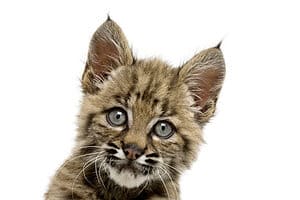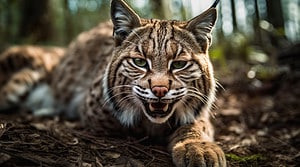You might think wild bobcats only live in rural mountain areas, like the Colorado Rockies. And you’d be partially right, as Colorado has over 12,000 bobcats. But you might be shocked to know that Wisconsin has almost four times more, with a population of 46,620! In fact, every state of the U.S. hosts wild bobcats except three: Delaware, Hawaii, and (surprisingly) Alaska. Their numbers across the country are growing, and that’s a bit of a problem. With human development moving more into their habitat, encounters between people and these wild cats are becoming more frequent. Because of this, it is important for us to understand these felines. In this article, we cover many bobcat facts, including how to ensure they stay on their side of the fence.
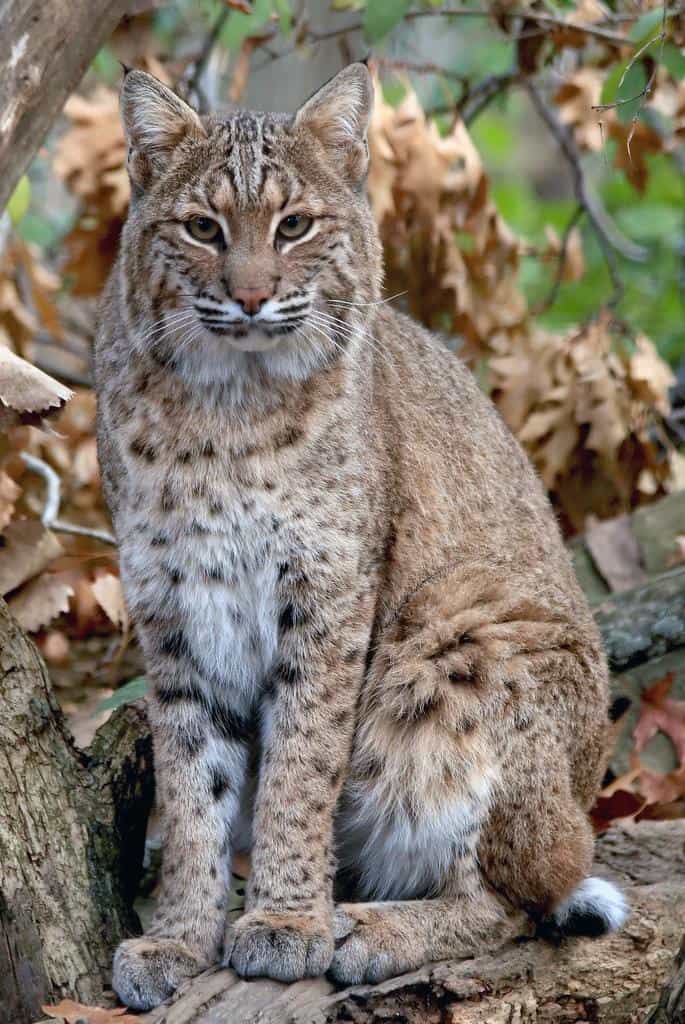
Bobcats have beautiful coats that help camouflage them as well as insulate them from temperature extremes.
©Becker1999 (Paul and Cathy), CC BY 2.0, via Wikimedia Commons – License
What are Bobcats and How Big Do They Get?
Bobcats are big carnivorous cats found in North America. You may hear someone refer to them as “wildcats” or “lynxes.” There are actually four types of lynxes, and bobcats are just one of them. There are some key differences between bobcats and other types of lynxes, though. The males are larger than the females and can get up to 37 inches long and 40 pounds heavy. Compare that to the average housecat of 28 inches long and 12 pounds. As you can see, bobcats are more the size of medium dogs than large cats. Among the other wild animals in their habitat, bobcats are closest in size to coyotes.
Where do Bobcats Live?
Like people, these guys figure out how to live in just about any North American climate. They roam around 47 states, Southern Canada, and Northern Mexico. You can find them in thick coniferous or deciduous forests. They also reside deep in the bayous of Louisiana and the wetlands of Florida’s Everglades. They even live in the deserts and canyons of the Southwest. What they look for is brushy cover they can hide in, and a supply of small animals they can eat. Those are pretty broad criteria! And in Wisconsin, where about half the land is forested, they feel very much at home.
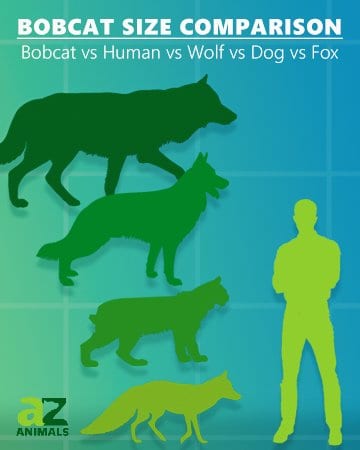
Why Are They All Named “Bob?”
Calling this animal a bobcat is not equivalent to calling a male cat a tomcat. In this case, “bob” refers to their short tails which look like they’ve been “bobbed” off. Their fur is brownish with dark spots, and they have spots and streaks of white on their face and bellies. Their cheek fur grows long like a beard or mane, and they have tufts on the tips of their ears. These animals have keen hunting senses: sight, hearing, and smell. They have a strong, athletic build and razor-sharp teeth and claws. They’re more than capable of feeding themselves and defending themselves from threats much larger than they are.
If the Parents Are Both Named “Bob,” What’s the Baby’s Name?
Baby bobcats are called “bobkittens.” Bobcats pretty much prefer to be alone, so they will stake out a territory and stink up the boundaries of it with urine and feces to keep others away. Males claim a giant territory of up to 30 square miles that overlaps with the smaller territories of females (about 5 square miles each). This enables the male to mate with more than one female, and the females to stay closer to their dens to take care of their cubs.
The mating season for bobcats can start as early as November and continue as late as August. It takes about two months for an expectant bobcat mother to give birth. During that time, she makes a den for her bobkittens in a secluded place, such as a cave or hollow tree, and lines it with moss and leaves to help keep it warm. The bobkittens are born in the spring and there are usually three of them. The mother drives the father away fiercely to keep him from hurting the bobkittens, but he may still roam the area from a distance.
After two months the little ones are done with milk and eating bits of grown-up food. They travel with the mother for up to five months to learn how to bobcat, then start leaving to pursue their independent hopes and dreams. Females are ready to become moms at one year old, and males can become dads at two.

By the time this adorable bobkitten becomes a young adult of 20 months or so, it will be eager to leave home and make its mark on the world.
©Ultrashock/Shutterstock.com
What Do Bobcats Eat?
Bobcats will eat small mammals like squirrels, mice, rats, or rabbits. Sometimes they will take on bigger prey, like a deer, but only if it is very young, injured, sick, or elderly. Bobcats are a really helpful part of the ecosystem. They greatly reduce the population of small animals and vermin that can carry diseases and create a lot of damage to crops. If bobcats didn’t fill this environmental niche, some animals that we might find even more problematic would multiply to do so, like rattlesnakes, coyotes, and even mountain lions.
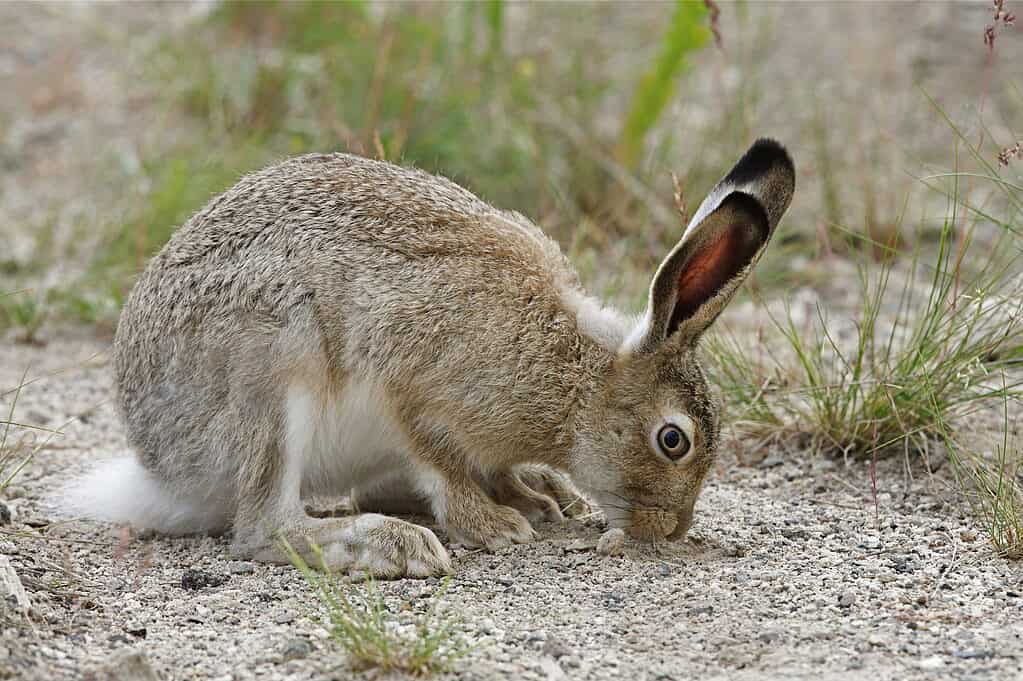
Bobcats keep down populations of small animals, including rabbits, rats, and mice, that otherwise would multiply uncontrollably.
©Tom Reichner/Shutterstock.com
Are Bobcats Endangered?
Bobcats are not at all endangered. There are an estimated one million of them in the United States and their numbers are growing in most parts of the country. The International Union for Conservation of Nature (IUCN) considers them a species of “least concern.” Their natural predators are larger carnivores such as coyotes, mountain lions, and wolves as well as predatory birds such as owls and eagles. Of course, as with most species, humans are their greatest threat, not just from hunting, but from sprawling development, deforestation, and pollution.
In Wisconsin, bobcat hunting is legal but heavily regulated. Anyone wanting to hunt a bobcat must apply in advance for a harvest permit or “kill tag.” Getting this permit requires applying in advance, paying a $6 fee, and being chosen through a lottery system. Hunters who want to trap a bobcat have to apply for a separate trapping license that requires completing a trapper education course. The course is waived for people who are active farmers. Some of the reasons a person might want to hunt a bobcat are for the experience of a different kind of hunt, to bag a trophy and perhaps have it mounted, to collect the animal’s fur, or because they fear bobcats near their property will be a danger to people or livestock.
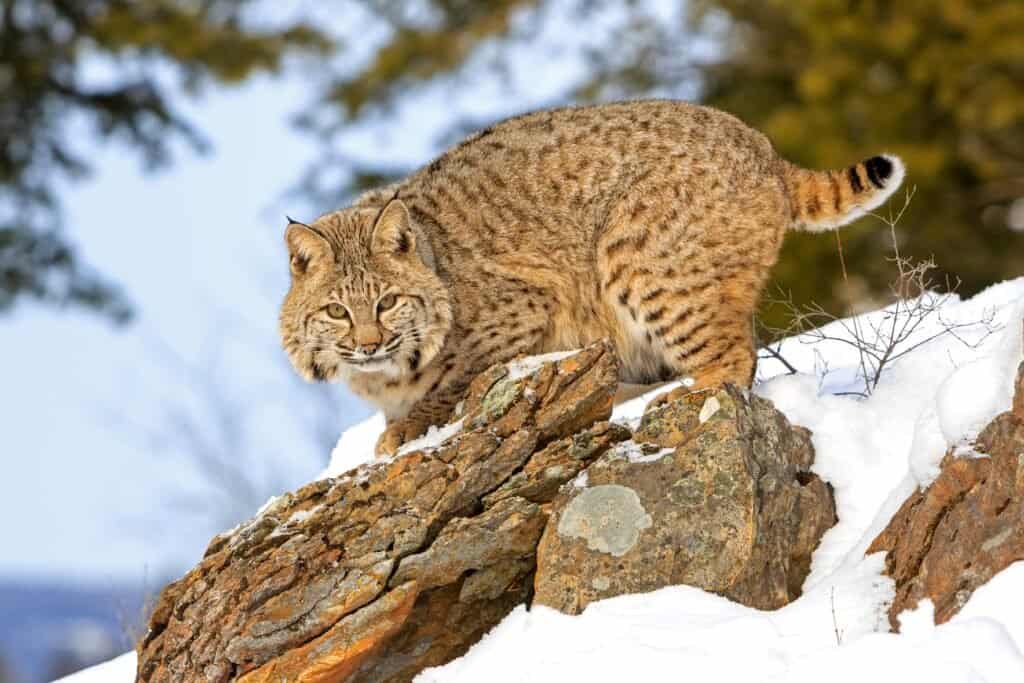
Bobcats are not endangered and hunting them is legal in Wisconsin but there are strict permitting requirements.
©Jack Bell Photography/Shutterstock.com
Why You Might Encounter a Bobcat in Wisconsin
Wisconsin has a lot of everything bobcats want: half the state is covered in forests they can hide in, it has plenty of fresh water, and there is a large population of small animals for them to eat. And best of all, most of it has no people. While 97% of Wisconsin is rural, only 30% of the population lives in rural areas.
Bobcats try to stay to themselves, so if you do happen to see one, you have something to brag about. Across the country though, encounters between bobcats and people are increasing. People are venturing into bobcats’ habitats more, hunting, hiking, camping, and building houses in areas that are part of their range. Additionally, as their numbers increase, their current territories can’t hold them all. They adapt to a life lived on the edges of human society in rural and suburban areas.
If you live in one of those areas, keep your eyes open for possible bobcat tracks in snow or mud. You’ll see the impressions of four toes and an “m”-shaped metacarpal pad. Dusk and dawn are the best times to spot them. What might bring them to your property is a hunt for prey, especially if it’s a harsh winter. Of course, if you have pets or small children playing in the yard, signs of bobcats should be taken very seriously. Ordinary fencing won’t keep a bobcat out because they can jump up to 12 feet in the air and climb trees and drop down from limbs where they want to be. But fencing can help keep your pets and children in your yard, so they don’t get in harm’s way.

Keep your eyes open for possible bobcat tracks in snow or mud. You’ll see the impressions of four toes and an “m”-shaped metacarpal pad.
©Bobcat tracks in the mud/Shutterstock.com
What To Do If a Bobcat is Too Close for Comfort
Bobcat attacks are really uncommon. They won’t attack something bigger than themselves unless there’s a really good reason for it or there is something wrong with them. In mating season or when they have bobkittens nearby, they are more territorial. If they’re sick or injured so that it’s hard for them to run away, they may react aggressively. And an animal foaming at the mouth, behaving oddly, and viciously hostile may be suffering from rabies. All scary stuff, so what do you do if you spot a bobcat? It all depends on where you spot it:
Defend Your Territory
To mark your territory and keep bobcats away:
- Keep brush cut down low to the ground to deny them hiding places.
- Turn on a radio or news channel outdoors so they will hear the sound of voices and leave.
- Install motion sensors that will activate sprinklers or lights when an animal moves into an unwanted place.
- If you see a bobcat in your yard, make a lot of noise from a safe place to scare it off. For example, stand on the porch or in the doorway and bang pots together, use an air horn, or yell and scream.
- If your dog is in a fight with a bobcat, stay a good long distance away and spray them with a water hose.
- Do not under any circumstances get physically involved in a bobcat fight to rescue a pet. You will get severely injured. (Think about it, that’s even true of a domestic catfight!)
Respect Their Territory
When you hike or camp in the woods, you may actually be in a bobcat’s territory. They will likely avoid you, but it’s possible that you’ll accidentally get too close to one as you’re going about your business. In that case:
- Don’t run away. This could activate the bobcat’s hunting instinct and cause it to chase you or try to leap onto you.
- Back away slowly to put as much distance as possible between you and the animal, until it moves off in the other direction.
- If the animal is not leaving but is inching closer toward you, make loud noises to scare it off, like yelling, banging camping pans together, blowing an emergency whistle, or hitting a walking stick or hiking pole against a tree.
- At the same time, you can throw things at the bobcat, such as rocks, sticks, those camping pans you’ve been banging, sports equipment, and whatever else you can find.
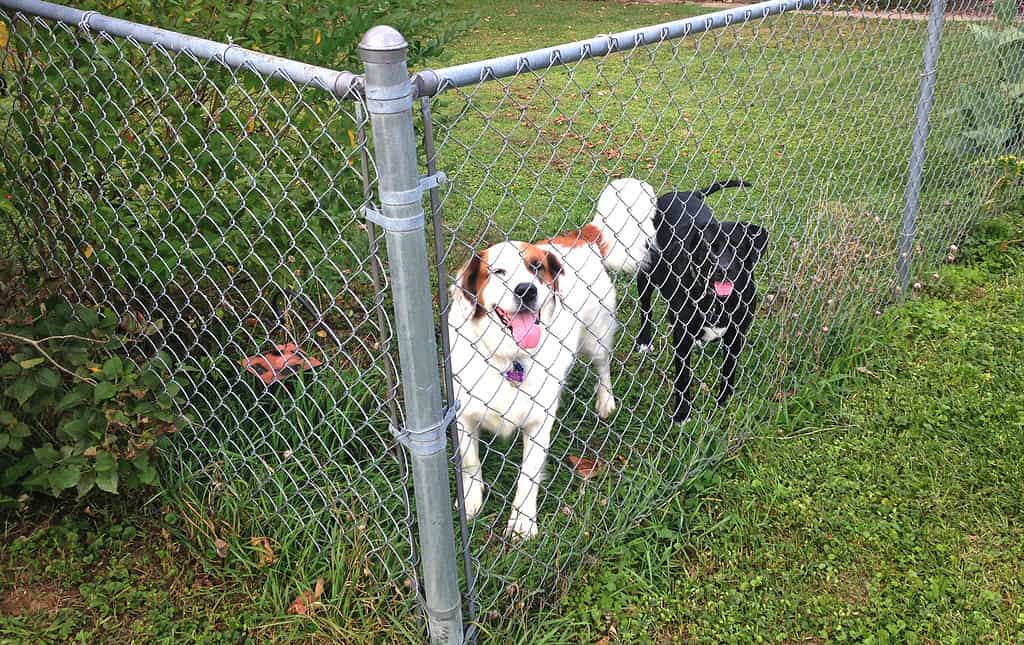
Fences won’t keep bobcats out, but they’ll keep your pets in so they don’t go chasing wild animals in the woods.
©Wendy van Overstreet/Shutterstock.com
Is a Bobcat / Domestic Cat Hybrid Possible?
I guess you wouldn’t call these “urban legends” as much as “rural legends,” but there always seems to be someone who claims they have seen a hybrid of a couple of kinds of animals that don’t usually get together. In this case, someone might claim at the family reunion that bobcats have been breeding with domestic cats and unsuspecting people are raising dangerous bobkittens(?) in their homes.
First of all, there are 70 million wild and feral cats in the United States, so there are plenty of opportunities for romantic liaisons between domestic housecats and bobcats. However, the differences in size and anatomical structure are significant, so no, these species cannot breed and produce viable offspring. Find out more in this article: Can domestic cats breed with bobcats?
Maybe this would be a good time to mention that if you have your cat spayed or neutered you won’t have to worry about them having kittens of any kind, normal or weird hybrids!
Can You Have a Pet Bobcat in Wisconsin?
Wisconsin is among 20 states that allow citizens to own a captured or domestic-bred bobcat as a pet. This site has a complete list of the legal status of owning a bobcat in all 50 states. But just because you can do something doesn’t mean you should. Even a bobkitten that was born in captivity still has wild instincts.
You’ll have to think about how to contain the animal in a strong cage as it grows, how to keep it from running away where it could get shot, how much it will eat, and how to train it out of its habit of marking territory. Will it be able to live in your house, or will it have to stay in a cage in your backyard? Is this really what is best for the animal, and enjoyable for you?
There’s an alternative you can look into. It’s called the pixie-bob. It looks so much like a bobcat, it helps fuel those “hybrid” rumors, but DNA testing has proved it’s just a domestic housecat that has been bred for a bobcat-like appearance.
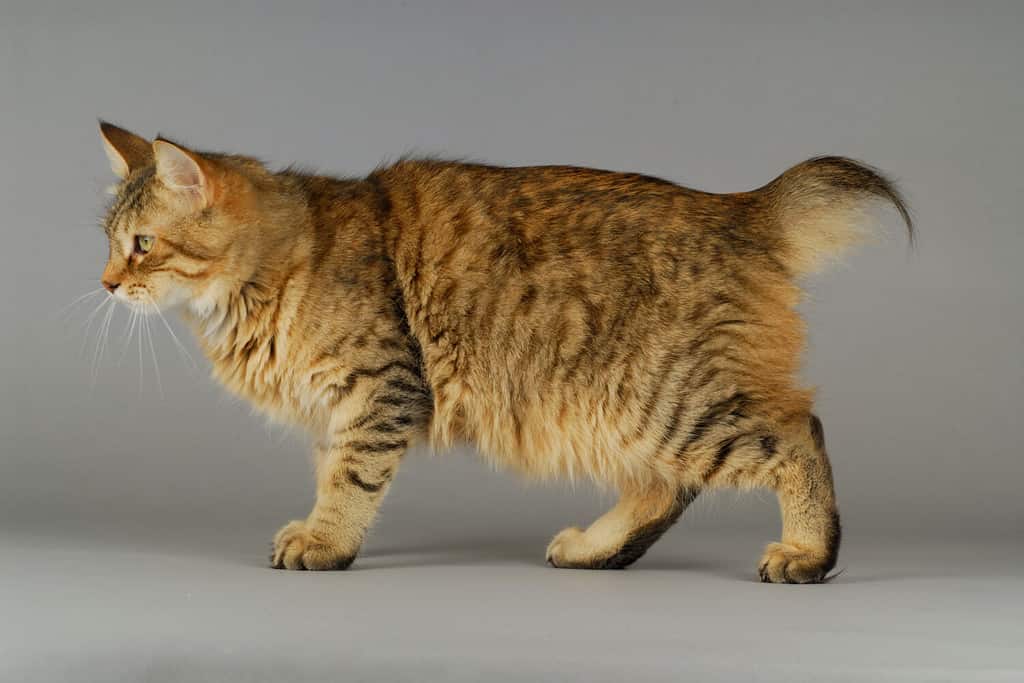
This is a pixie-bob: a housecat that has been bred to have a build, coloration, and even bobbed tail similar to a bobcat.
©COULANGES/Shutterstock.com
Conclusion
So now you know that Wisconsin has a ton of bobcats and that’s actually great for the natural balance as long as they stay away from people. You know that bobcats do stay away from people, but if for some reason they don’t you can do some things to discourage them from coming near you and your pets. And you know that you don’t have to worry about weird bobcat-housecat hybrids, but in Wisconsin, you do have to worry that a neighbor might legally keep an actual bobcat in their house! But you know, if we’re going to have a million wild animals roaming our country, the bobcat is actually a pretty cute choice . . . as long as it stays in the woods where it belongs.
The photo featured at the top of this post is ©
Thank you for reading! Have some feedback for us? Contact the AZ Animals editorial team.




